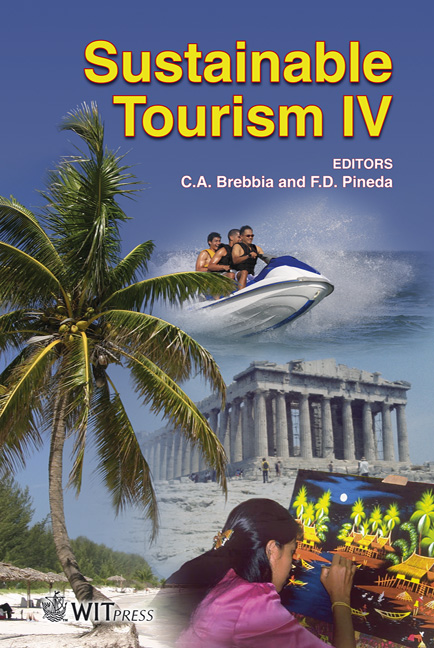A Web-GIS For The Choice Of The Path In Regional Greenways
Price
Free (open access)
Transaction
Volume
139
Pages
8
Page Range
123 - 130
Published
2010
Size
3,845 kb
Paper DOI
10.2495/ST100111
Copyright
WIT Press
Author(s)
G. Salvo & B. Lo Casto
Abstract
Tourists seem less interested in the traditional sites of mass tourism, which has damaged local identities. The tourist reclaims the old function of journey, intent on widening his knowledge of the surrounding territory while respecting the social and cultural equality of other members of the population. This study outlines a methodology to identify the generalized cost for a system of non-motorized transport in order to determine the modal choice of users and the route of minimum cost to reach the desired destination. Within the information users, a key role is played by telematics, which are now widely accessible through web interfaces. With the word greenways we mean the network for the non-motorized, constituted by paths inserted in a natural context with particular attention to the historic and cultural patrimony of the territory. The trend of research in the field of greenways today is strongly geared towards the infrastructural design of routes. The specific studies and manuals, such as the Dutch CROW, reported mainly geometric patterns of infrastructure and design criteria for parking areas, to improve the transit of pedestrians and bicycles. From the user's perspective it becomes relevant to bring this to fruition because of its main attributes: physical effort and safety, especially for nonsystematic users who may have knowledge about places but not on the tracks and their level of difficulty. In this sense, the greenways are designed both as continuous long-distance routes and as local networks suitable for systematic trips. The GIS contains layers and topological mapping with tourist and local information and a network of greenways, composed of individual links with a weight corresponding to the generalized cost needed to pass, which coincides with the physical demands of the user. This effort coincides with the energy to
Keywords
tourist development, greenways, telematics





